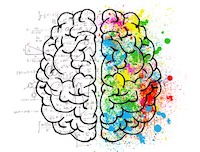Have you ever walked into the kitchen, only to realize that you’ve now forgotten why you walked into the kitchen?
We’ve all done that. It’s called the Doorway Effect and it’s a well understood phenomenon that has to do with how we store and retrieve memories. As we move from one space into another, our brains helpfully pack away all the memories having to do with the previous space and make available all the memories needed for the new space. This happens constantly and most of the time it works to our benefit and we don’t even notice it. Except in those situations where our brains pack away the very reason that we’d entered that new space and now we’re left looking confused as we try to remember why we’d come into the kitchen.
How is this relevant for what we’re doing in Agile? Many teams (when in the same physical space) will get up and move to a different room for standups. This now may make it harder for the team members to remember what they’d been working on and make it very difficult to participate usefully in the meeting.
Because standups require us to talk about specific work, we should hold that standup in the same place that we do the work so that all the information we need, is right there.
Retrospectives are the opposite. That’s a case where we want to dissociate from the day to day work so that we can focus at a higher level. For a retrospective, it’s beneficial to NOT do that where we do the work.
How does this work in a remote environment? We’re all in front of the same computer all the time so does the doorway effect even matter here?
The short answer is yes.
I had a client years ago that changed the background colour of their login page from one shade of blue to a slightly lighter shade of blue. Nothing else beyond the background colour had changed and even that change was fairly small. The morning after they rolled that change out, the help desk was overwhelmed with calls from people who couldn’t remember their passwords.
These people had come to what should have been a familiar space but it was just different enough to trigger the doorway effect and nobody could remember what their passwords were.
In a remote setting, we can leverage the doorway effect with background colours, specific tools or anything else that might bring up the familiar (for standup) or the unfamiliar (for retro) as needed.

